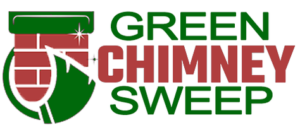A properly functioning chimney is essential for the safety and efficiency of any home that uses a fireplace, wood stove, or furnace. One of the critical components of a chimney system is the flue, which channels smoke and combustion gases out of your home. Over time, chimney flues can develop cracks due to various factors such as thermal stress, moisture infiltration, or natural wear and tear. Chimney flue repair and maintenance is vital to prevent hazards like chimney fires and carbon monoxide poisoning. This article will guide you through the process of identifying and repairing chimney flue cracks.
Understanding the Importance of the Chimney Flue
The chimney flue is the internal passage that directs smoke, gases, and other byproducts of combustion out of your home. Typically made from clay tiles or metal, the flue must remain intact to ensure safe and efficient ventilation. Cracks in the flue can compromise this function, allowing harmful gases to escape into your home and increasing the risk of chimney fires.
Signs of a Cracked Chimney Flue
Detecting cracks in your chimney flue requires vigilance and regular inspections. Here are some common signs that indicate your flue may be damaged:
- Visible Cracks or Gaps During a visual inspection, you may notice visible cracks or gaps in the flue lining. These can appear as small hairline fractures or more significant openings.
- Smoke Leakage If you notice smoke leaking into your living space when the fireplace is in use, it could be a sign of a cracked flue. Smoke should always travel up and out through the flue, so any leakage indicates a problem.
- Unusual Odors A cracked flue can allow combustion gases to seep into your home, leading to unusual and often unpleasant odors. This can include the smell of smoke, burnt wood, or other chemical odors from the combustion process.
- Damaged Chimney Structure Cracks in the flue often accompany other structural damage to the chimney, such as crumbling mortar, loose bricks, or a damaged chimney crown. Inspecting the exterior of the chimney can provide clues to the condition of the flue.
- Soot or Creosote Buildup Excessive soot or creosote buildup can sometimes indicate a damaged flue. While creosote is a normal byproduct of burning wood, its rapid accumulation can signal that the flue is not venting properly.
Steps to Detect and Diagnose Flue Cracks
- Professional Inspection The most reliable way to detect cracks in your chimney flue is to schedule a professional inspection. Certified chimney sweeps use specialized tools and cameras to thoroughly examine the interior of the flue and identify any cracks or damage.
- Smoke Test A smoke test involves lighting a small fire in the fireplace and observing the movement of the smoke. If smoke escapes through cracks in the flue rather than traveling up and out, it confirms the presence of a crack.
- Chimney Camera Inspection Chimney professionals often use chimney cameras to get a close-up view of the flue’s interior. This allows them to identify even small cracks that may not be visible during a standard inspection.
Fixing Cracks in the Chimney Flue
Once cracks are detected, it’s essential to address them promptly to prevent further damage and ensure safe operation. Here are the steps to fix cracks in your chimney flue:
Cleaning the Flue Before any repairs can be made, the flue must be thoroughly cleaned to remove soot, creosote, and other debris. A professional chimney sweep will use specialized brushes and vacuums to clean the flue.
Assessing the Damage The extent of the damage will determine the appropriate repair method. Small cracks may require simple patching, while more extensive damage could necessitate a full relining of the flue.
Patching Small Cracks For minor cracks, a refractory mortar or sealant specifically designed for high-temperature applications can be used. The chimney professional will apply the mortar to the cracks, ensuring a tight seal that can withstand the heat of the fireplace.
Flue Relining In cases where the flue has extensive damage or multiple cracks, relining may be necessary. This involves installing a new liner inside the existing flue. Common materials for relining include stainless steel, aluminum, or a cast-in-place liner.
- Stainless Steel Liners: These are durable, flexible, and resistant to corrosion. They are often used for wood-burning fireplaces.
- Aluminum Liners: Typically used for gas fireplaces, aluminum liners are lightweight and resistant to high temperatures.
- Cast-in-Place Liners: These involve pouring a cement-like mixture into the flue, creating a seamless and durable lining. This method is ideal for older chimneys with irregular shapes.
Rebuilding the Chimney If the flue damage is part of a broader structural issue with the chimney, rebuilding may be necessary. This involves removing damaged sections of the chimney and reconstructing them with new materials. It’s a more extensive and costly repair but ensures the long-term safety and functionality of the chimney.
Regular Maintenance After repairs are made, regular maintenance is crucial to prevent future damage. Schedule annual chimney inspections and cleanings to ensure that your flue remains in good condition. This proactive approach helps identify and address potential issues before they become major problems.
Conclusion
Detecting and fixing cracks in your chimney flue is essential for maintaining a safe and efficient home heating system. Regular inspections, professional cleaning, and timely repairs can prevent hazards such as chimney fires and carbon monoxide poisoning. By staying vigilant and addressing flue damage promptly, you can enjoy the warmth and comfort of your fireplace with peace of mind.
For expert chimney flue inspection and repair services, trust the professionals at Green Chimney Sweep. Contact us today to schedule your inspection and ensure the safety of your home.
